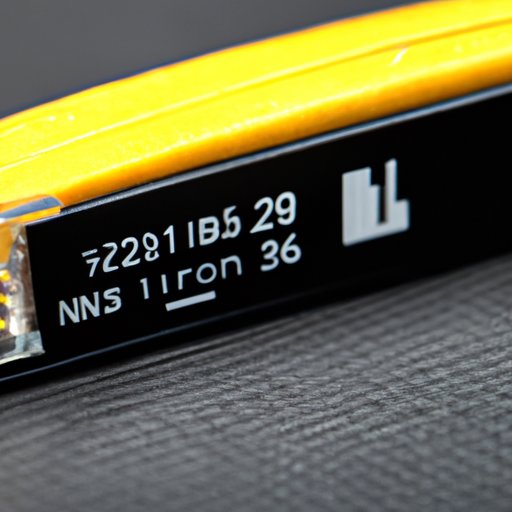
Introduction
Slow upload speeds can be incredibly frustrating and time-consuming, especially if you work from home or rely on uploading files regularly. Whether you’re uploading photos, videos, or documents, slow upload speeds can be a common issue that affects your productivity and online experience. In this article, we’ll discuss various solutions that you can implement to increase your upload speed and achieve faster and more reliable internet connections.
Optimize your Internet Speed
Having a fast internet connection is essential for achieving optimal upload speeds. If you’re experiencing slow upload speeds, the first step is to assess your internet speed and determine whether you need to upgrade your plan or change your provider. Here are some ways to optimize your internet speed:
- Upgrade internet plan: Consider upgrading your internet service plan to receive faster upload and download speeds. Talk to your internet service provider to determine the most suitable plan for your needs.
- Change internet provider: If your current internet provider doesn’t offer fast upload speeds, consider looking for alternatives in your area. There may be other providers that offer faster upload speeds and more reliable connections.
- Limit the number of devices connected to your network: Too many devices connected to your network can slow down your internet speed. Consider disconnecting devices that are not in use or limit the number of devices connected to your network at a time.
Check for Interference
Other devices or objects nearby can interfere with your internet signals and impact your upload speed. Here’s how you can reduce interference:
- Ensure that your Wi-Fi router location is free from obstructions: Place your Wi-Fi router in a location that is free from obstructions. Objects such as walls and furniture can obstruct Wi-Fi signals, which can slow down your internet connection.
- Disconnect or turn off any devices that could interfere with your internet connection: Devices such as microwaves, Bluetooth devices, and cordless phones can interfere with your Wi-Fi signals. Disconnecting or turning off these devices can help improve your upload speed.
Clear Cache
Cache is temporary data that is stored on your computer to help websites load faster. However, if your cache is full, it can slow down your internet speed. Here’s how you can clear your cache:
- Clear cache on your computer: On Windows computers, you can clear your cache by pressing Ctrl + Shift + Delete. On Mac computers, you can clear your cache by pressing Command + Shift + Delete. Be sure to select the appropriate time range to clear (e.g., the past hour or past day).
- Clear cache in your web browser: Your web browser also has its own cache, which you can clear to improve internet speed. Instructions for clearing your browser cache vary by browser, but you can typically find the option under Settings or Preferences.
Turn off Other Programs or Devices
Uploading files can take up a lot of bandwidth, so it’s essential to reduce any unnecessary programs or devices that are using bandwidth and slowing down your upload speed. Here’s what you can do:
- Close or turn off other programs that are using bandwidth: Programs such as Skype, Dropbox, and other cloud-based services can take up a lot of bandwidth, so it’s best to close or turn them off while uploading large files.
- Disconnect any devices that are connected to the internet but not in use: If you have other devices connected to your network, such as gaming consoles, smart TVs, or tablets, consider disconnecting them while uploading files to reduce overall bandwidth usage.
Use a Wired Connection
A wired connection offers a more reliable and faster internet connection than a wireless connection. Here’s how to set up a wired connection:
- Purchase an Ethernet cable: You’ll need an Ethernet cable to connect your modem to your computer. Ethernet cables come in different lengths, so choose one that is long enough to reach your modem.
- Connect one end of the Ethernet cable to your modem and the other end to your computer: Plug one end of the Ethernet cable into the Ethernet port on your modem and the other end into the Ethernet port on your computer.
- Adjust your computer’s network settings to prioritize the wired connection: Once you’re connected to the internet via the Ethernet cable, adjust your computer’s network settings to prioritize the wired connection over Wi-Fi. This will ensure a faster and more reliable internet connection.
Conclusion
If you’re experiencing slow upload speeds, don’t worry – there are several solutions that you can implement to improve your internet speed and achieve faster upload speeds. Whether you need to optimize your internet speed, check for interference, clear cache, turn off other programs or devices, or use a wired connection, there are many steps you can take to get your internet speed up to par. If you’ve tried these solutions and are still experiencing slow upload speeds, be sure to seek additional help from your internet service provider or a professional internet technician.





